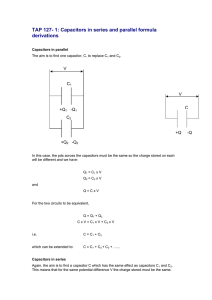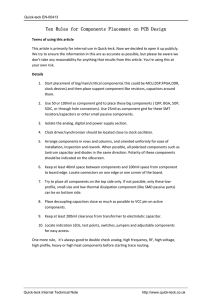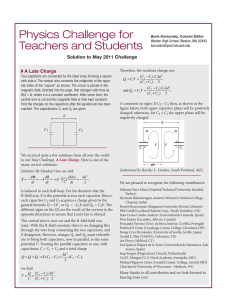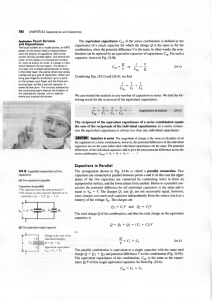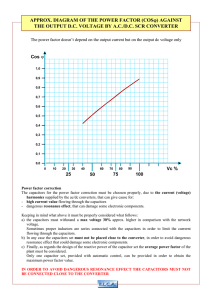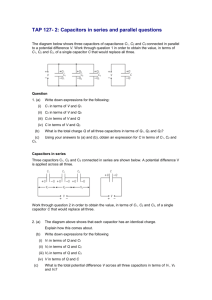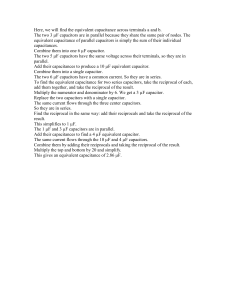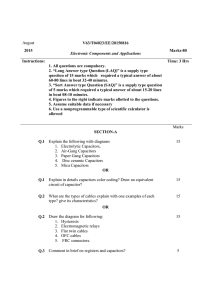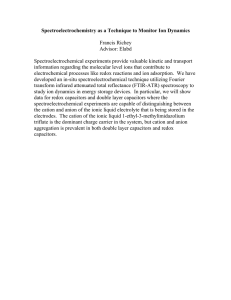TAP 127- 1: Capacitors in series and parallel formula derivations
advertisement
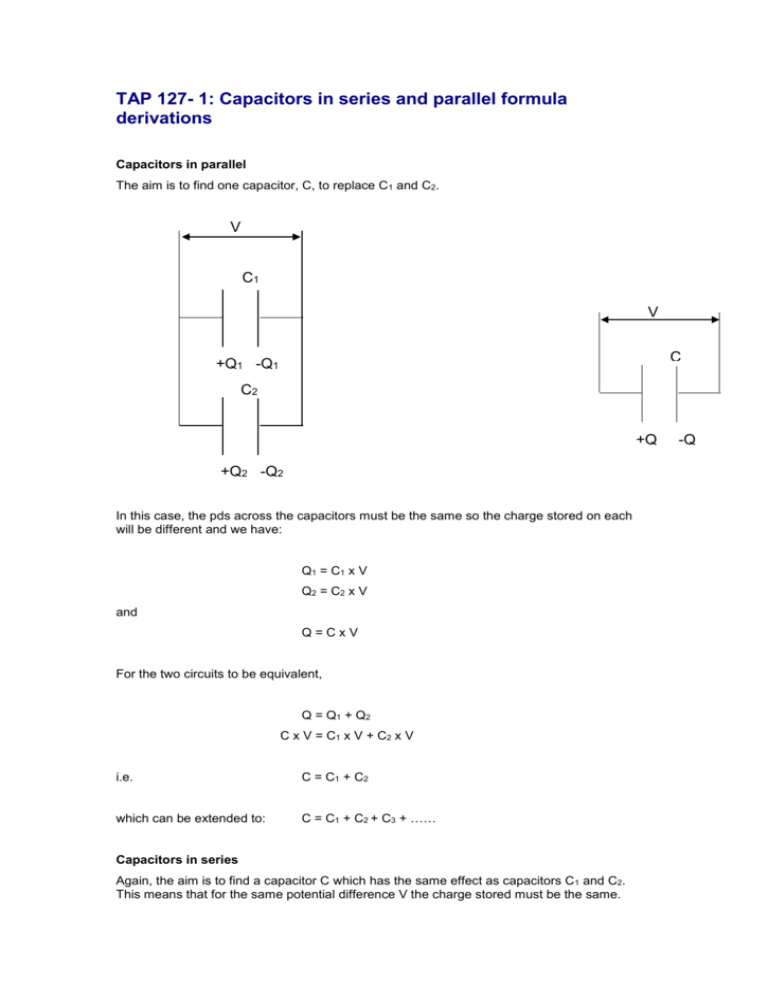
TAP 127- 1: Capacitors in series and parallel formula derivations Capacitors in parallel The aim is to find one capacitor, C, to replace C1 and C2. V C1 V C +Q1 -Q1 C2 +Q +Q2 -Q2 In this case, the pds across the capacitors must be the same so the charge stored on each will be different and we have: Q 1 = C1 x V Q 2 = C2 x V and Q=CxV For the two circuits to be equivalent, Q = Q1 + Q2 C x V = C1 x V + C2 x V i.e. C = C1 + C 2 which can be extended to: C = C1 + C2 + C3 + …… Capacitors in series Again, the aim is to find a capacitor C which has the same effect as capacitors C 1 and C2. This means that for the same potential difference V the charge stored must be the same. -Q V V C1 +Q -Q C2 +Q -Q C +Q -Q If either the left hand plate of C1 or the right hand plate of C2 held an excess of charge then electrons would move until there was equal charge on the two plates. (Another way to think of this is that the section consisting of the right hand plate of C1 and the left-hand plate of C2 is isolated and uncharged.) So: the pd across C1 is V1 = Q/C1 the pd across C2 is V2 = Q/C2 and the pd across C is V = Q/C but for components in series: V = V1 + V2 So Q/C = Q/C1 + Q/C2 i.e. 1/C = 1/C1 + 1/C2 which for more capacitors can be extended to: 1/C = 1/C1 + 1/C2 + 1/C3 ……
